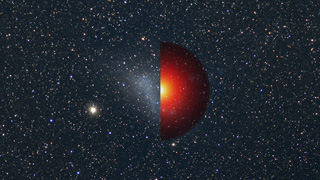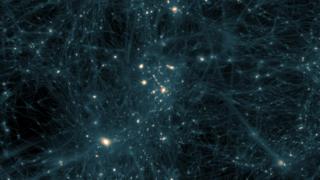Fermi Hints at Dark Matter
No one knows the true nature of dark matter, but WIMPs, or Weakly Interacting Massive Particles, represent a leading class of candidates. Theorists have envisioned a wide range of WIMP types, some of which may either mutually annihilate or produce an intermediate, quickly decaying particle when they collide. Both of these pathways end with the production of gamma rays — the most energetic form of light — at energies within the detection range of Fermi's Large Area Telescope (LAT).
The galactic center teems with gamma-ray sources, from interacting binary systems and isolated pulsars to supernova remnants and particles colliding with interstellar gas. It's also where astronomers expect to find the galaxy's highest density of dark matter, which only affects normal matter and radiation through its gravity. Large amounts of dark matter attract normal matter, forming a foundation upon which visible structures, like galaxies, are built.
When the astronomers carefully subtract all known gamma-ray sources from LAT observations of the galactic center, a patch of leftover emission remains. This excess appears most prominent at energies between 1 and 3 billion electron volts (GeV) — roughly a billion times greater than that of visible light — and extends outward at least 5,000 light-years from the galactic center. The researchers find these features difficult to reconcile with other explanations proposed, such as undiscovered pulsars. The gamma-ray spectrum of the excess, its symmetry around the galactic center and its overall brightness, is, however, consistent with annihilations of dark matter particles in the mass range of 31 and 40 GeV.
The scientists note that discoveries in other astronomical objects, such as dwarf galaxies, and experiments on Earth designed to directly detect dark matter particles will be needed to confirm this interpretation.
For more information: Fermi Data Tantalize With New Clues To Dark Matter
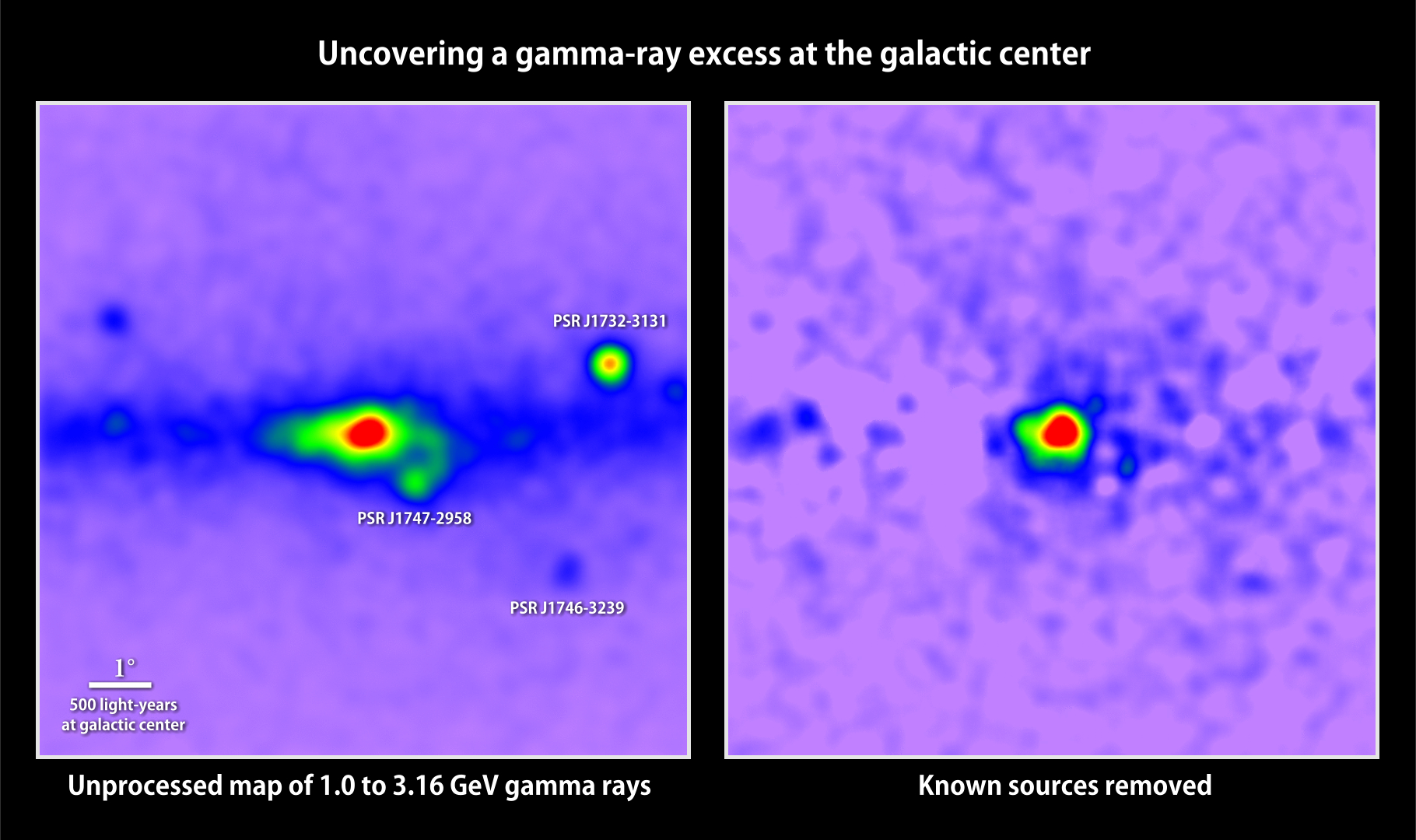
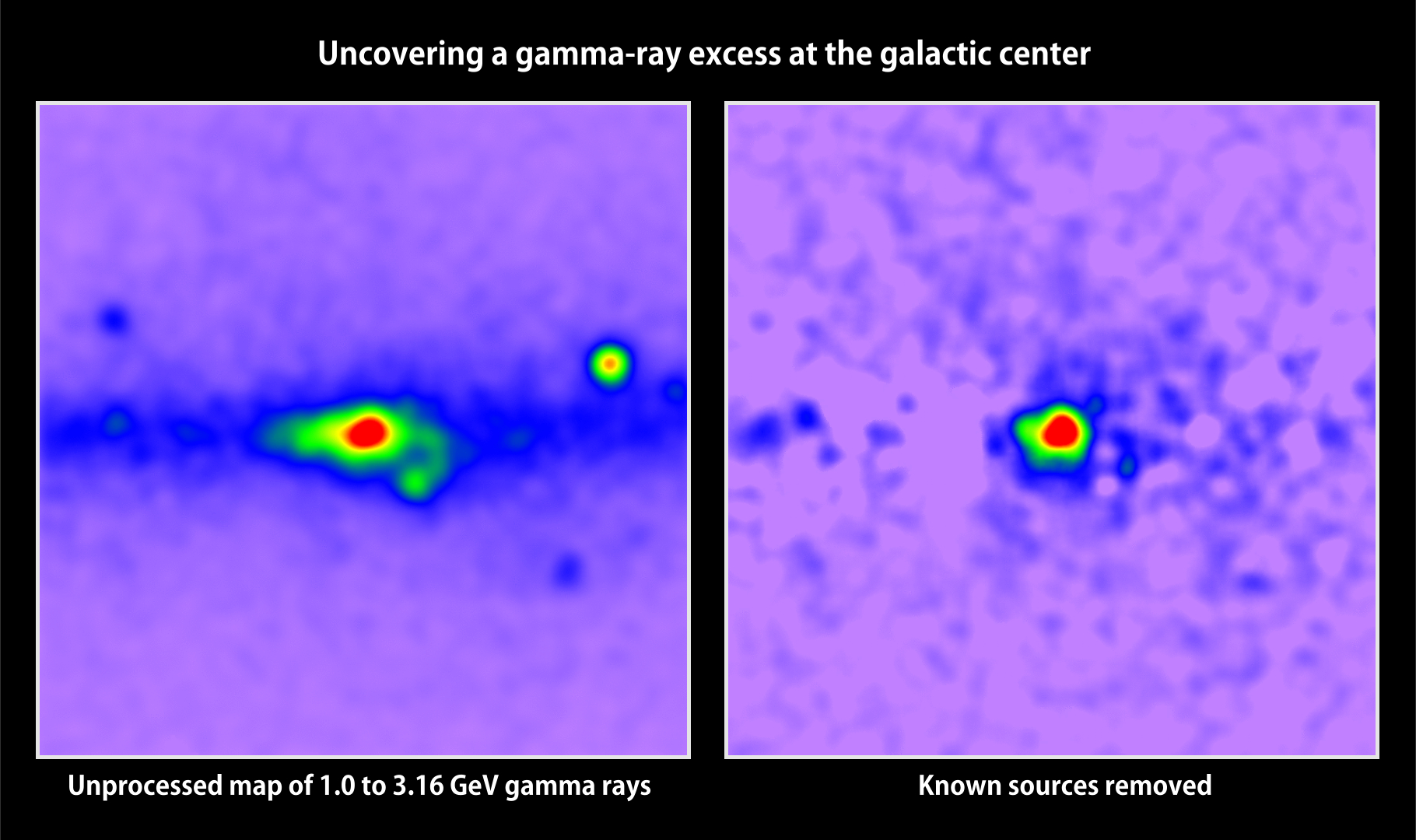
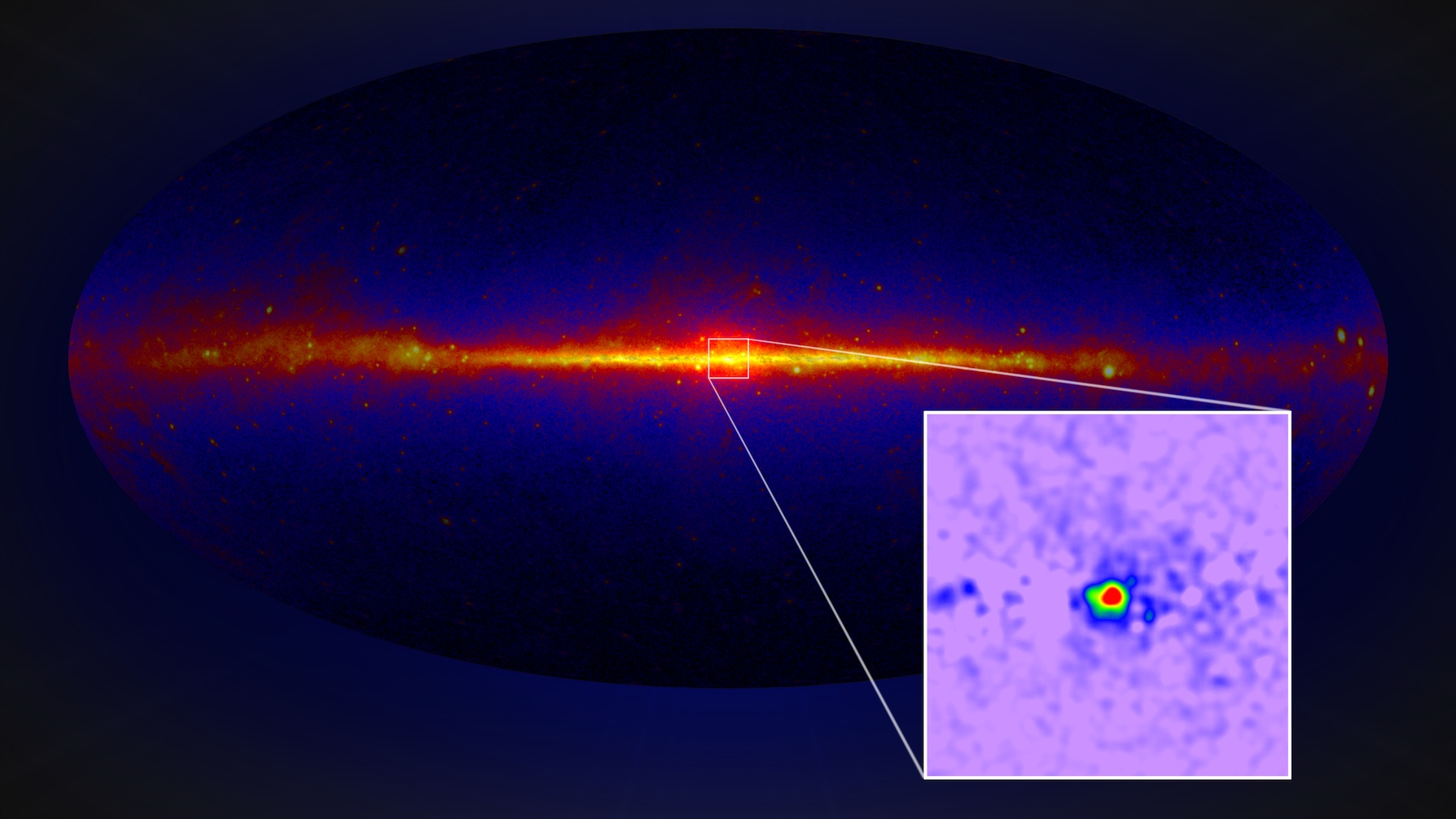
Related
Credits
Scott Wiessinger (USRA): Producer
Tim Linden (University of Chicago): Scientist
Francis Reddy (University of Maryland College Park): Lead Science Writer
Francis Reddy (University of Maryland College Park): Graphics
NASA's Goddard Space Flight Center. However, individual images should be credited as indicated above.
https://svs.gsfc.nasa.gov/11513
Mission:
Fermi Gamma-ray Space Telescope
Data Used:
Fermi/LAT
Event ListThis item is part of these series:
Astrophysics Visualizations
Astrophysics Stills
Keywords:
SVS >> Galaxy
SVS >> HDTV
SVS >> Milky Way
GCMD >> Earth Science >> Spectral/Engineering >> Gamma Ray
SVS >> Astrophysics
SVS >> Pulsar
SVS >> Space
SVS >> Dark Matter
SVS >> Fermi
NASA Science >> Universe
GCMD keywords can be found on the Internet with the following citation: Olsen, L.M., G. Major, K. Shein, J. Scialdone, S. Ritz, T. Stevens, M. Morahan, A. Aleman, R. Vogel, S. Leicester, H. Weir, M. Meaux, S. Grebas, C.Solomon, M. Holland, T. Northcutt, R. A. Restrepo, R. Bilodeau, 2013. NASA/Global Change Master Directory (GCMD) Earth Science Keywords. Version 8.0.0.0.0
